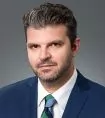The Wall Street Journal's Health Forum convened—virtually—on March 24th during an extraordinary period in global health: the novel coronavirus is threatening populations, overwhelming provider systems, and sending economies into uncharted territory. The interactive event assembled executives, investors, health professionals, industry experts, and leaders in health policy to provide insight into managing the crisis.
Sheppard Mullin attended the Forum and has summarized below some of the outstanding content covered throughout the day.
A. Flattening the Curve and Protecting Providers:
Jeff Colyer, M.D., the former Governor of Kansas and current Chair of the National Advisory Committee on Rural Health and Human Services, provided insight into the experience of providers on the ground who are managing the epidemic, arguing that the country must do dramatically more to provide them with the equipment they need to do their jobs safely. Simon Johnson, Ph.D., Professor of Entrepreneurship at the MIT Sloan School of Management, echoed Dr. Colyer's sentiments, stating that a critical linchpin in the health system's operational situation is our providers' extremely limited supply of personal protective equipment (PPE). He suggested that if the federal government were unable to secure additional PPE reserves, private companies, like commercial airlines, could potentially act to resupply the frontlines. Howard Zucker, M.D., Commissioner of the New York State Department of Health, emphasized that, to combat the virus with limited equipment, "We need to think creatively." Trained as an anesthesiologist, Dr. Zucker detailed New York's plan to address the shortage of ventilators by employing an experimental "splitting" strategy; he also stated that the state was relying on a variety of digital tools, including telemedicine and oximetry meters, to slow infection rates and provide treatment.
In addition to focusing on acute care delivery, Joshua M. Sharfstein, M.D., Professor of Health Policy and Management at the Johns Hopkins Bloomberg School of Public Health, said that if the United States is unable to prevent infections and develop prevention methods, there is no amount of acute care that will suffice. He noted that clear communication with high-risk organizations, like nursing homes and elder care facilities, would be critical. Dr. Colyer expressed particular concern regarding rural areas, where there are "no surge capacities." He estimates that roughly 60 million people live in rural areas, served by only a few hospitals and a few providers who may themselves become exposed to the virus and lose the capacity to treat infected patients.
Scott Gottlieb, M.D., Fellow at the American Enterprise Institute, noted that many states, having missed the opportunity to do more focused case-based intervention, must rely on broad, sweeping, lock-down measures. Dr. Gottlieb remarked that while states experiencing episodic or small clusters of infection could conceivably take case-based intervention, because testing is not widely available, it is difficult to detect and track the virus. Dr. Gottlieb further observed that the initial thinking on transmission may have been wrong: rather than droplets from coughing and sneezing, contaminated surfaces seem to be a major transmission vehicle.
Dr. Zucker stressed that in New York—the current epicenter of the U.S. outbreak, with over 75,795 (at the time of this blog post) confirmed cases—it is crucial for the public to heed the stay-at-home order: "We try to tell people to engage in social distancing. There hasn't been direct enforcement from the state, but we are pushing very hard on the message." However, contrary to Dr. Zucker's assertion that the state would not directly enforce social distancing, Mayor Bill De Blasio has indicated that New York could close its parks in response to violations of the state's 6-foot distancing mandate. Dr. Sharfstein explained that many states have imposed such extreme social distancing measures because "we desperately need to buy time" in the immediate term in order to flatten the curve and avoid overwhelming healthcare systems. As researchers gather coronavirus data, including metrics on the spread of the infection, states will be able to lift extreme social distancing measures. While he could not provide an end-date for current social distancing measures, Dr. Sharfstein estimates that in 1-2 months, much of the uncertainly surrounding the pandemic will begin to subside and new timelines and standards for social distancing may begin to emerge.
B. Managing the Cytokine Storm:
Dr. Jeff Colyer, M.D., advocated for the use of the anti-malarial drug, hydroxychloroquine, along with Zithromax Z-Pak (Pfizer Inc.'s brand name drug for the antibiotic azithromycin), against COVID-19. Severe cases of COVID-19 can set off an overreaction of the body's immune system called a "cytokine storm"; hydroxychloroquine belongs to a class of medications known as disease-modifying antirheumatic drugs, which may have the effect of quelling such storms.
Alexander Hardy, the CEO of Genentech, echoed Dr. Colyer's point about using existing drugs and compounds to potentially quell cytokine storms. Genentech has provided 10,000 vials of its immunosuppressive drug, Actemra, to the Strategic National Stockpile in parallel with running a Phase III study so that hospitals and doctors can provide the treatment as soon as possible. Actemra acts as an inhibitor of the receptor of interleukin 6 (IL-6), a proinflammatory cytokine.
With respect to repurposing existing drugs like hydroxychloroquine and Actemra for the treatment of COVID-19, Amy Abernethy, M.D., Ph.D. the Principal Deputy Commissioner of the U.S. Food and Drug Administration, observed that stakeholders need to ask, in a judicious way, what data supports these interventions over other interventions. The FDA is critically focused on assuring that reliable data gets generated. A randomized controlled trial is the "most appropriate way" to determine whether these drugs fit within a potential treatment program for patients with COVID-19, she observed. However, in addition to randomized controlled trials, Dr. Abernethy stated that looking to other complementary evidence sources would help to fill gaps and speed-up access to viable treatments. As long as researchers and the FDA maintain patient privacy and safety protections, in the midst of a pandemic, Dr. Abernethy stressed "We should not leave any data source unturned!"
C. Vertical Integration Leads to Innovative Healthcare Delivery:
Across the industry, companies are leveraging strategic partnerships to improve patient outcomes, enhance data analytics, and expand operations into new areas across the healthcare supply chain.
- Case Study – CVS Health and
Aetna. Larry Merlo, President and CEO of CVS Health, stated
that the Aetna acquisition has, overall, succeeded in providing
improved customer experiences, reduced costs, and increased access
to providers in homes and communities across the country; it has,
further, helped CVS to address the novel coronavirus crisis:
"On an annual basis, we interact with about 1 in 3 Americans, which means that when faced with a health crisis, we are in a unique position to address it."CVS has taken many steps to increase customer access to necessary healthcare: it has waived fees for prescription delivery, waived copays associated with telemedicine, waived copays for coronavirus testing, and is making it easier to get refills by waiving early refill limits. In a nod to its roots as a community drug store, alongside pharmaceuticals, CVS is sending many of its customers care packages of CVS-brand household, cleaning, and wellness products. Although he acknowledged dramatic spikes in the purchase of cleaning supplies and paper products by consumers, Merlo emphasized that the continuity of the supply chain is strong and, further, there has been no significant change in the timely fulfillment of prescriptions.Further, while the pandemic has caused significant layoffs and furloughs across the country, CVS intends to hire 50,000 new employees. Stating that CVS' current employees have been "tasked with heroic responsibilities", Merlo believes the hiring move is required to relieve the burden his employees are shouldering. To provide additional support, CVS is offering its employees paid 14-day quarantine periods, childcare, benefits and wage programs intended to allow employees to stay home if they don't feel well, and bonus amounts. Further, Merlo is partnering with hard-hit industries—like the hotel industry—to offer employment opportunities to their laid-off workers.
Merlo commented that it is too early to tell what kind of financial impact the pandemic will have on Aetna, but that CVS continues to work diligently with providers to reduce the burdens of transitioning care of patients from hospitals—to, for example, skilled nursing facilities, or to their homes—in order to free-up critical beds.
Beyond the immediate crisis management concerns, Merlo was excited to report that CVS will venture deeper into healthcare delivery. The CVS HealthHUB—wherein 20% of the retail store is dedicated to the provision of affordable healthcare services—was introduced in Houston last January, and 1,500 more hubs are set to launch by the end of 2022. The HealthHUB concept is intended to address three imperatives: (i) make healthcare local, and meet people where they are; (ii) provide information and resources, so that consumers can make informed decisions; and (iii) effective management of chronic conditions, which accounts for 70-80% of total healthcare costs. Merlo firmly believes that the improvement of chronic disease outcomes will significantly reduce overall healthcare costs.
- Case Study – Flatiron Health and Foundation Medicine. Alexander Hardy, the CEO of Genentech, commented on how the recent acquisitions by Roche, its parent company, of Flatiron Health and Foundation Medicine, have advanced the vertical integration of two complex and complementary data sets. Hardy described the two acquisitions as an integration of longitudinal data with molecular data that will allow Roche to advance outcomes in novel ways. Foundation Medicine is a leader in the sequencing of tumors, and Flatiron Health, is a leader in longitudinal patient data. Hardy reports that, last year, Foundation conducted next-generation sequencing to determine which patients might benefit from Rozlytrek, a pan-tumor drug. Then, by using Flatiron's patient data, researchers were able to compare how a patient who didn't get Rozlytrek compared to a patient, with the same characteristics, who received the drug. In this way, researchers have control data to show payors and regulators regarding efficacy. This "case study" demonstrates why government agencies, payors and pharma should look for innovative ways to work with other companies following in Flatiron's footsteps who are aggregating and analyzing big data to improve patient care and lower costs.
D. Accelerating Progress Towards a Vaccine:
Trevor Mundel, M.D., Ph.D, the President of Global Health at the Bill & Melinda Gates Foundation, noted that a vaccine is likely 12 to 18 months away from finalization. In the near-term, he agreed that certain drugs have shown promise in vitro. To speed the global pathway towards an antiviral, the Gates Foundation, together with the Wellcome Trust and Mastercard, has developed a COVID-19 Therapeutics Accelerator. The Accelerator partners with private and philanthropic enterprises to lower the financial risk and technical barriers for biotech and pharmaceutical companies developing antivirals for COVID-19.
Dr. Mundel is hopeful that, by the end of the year or early next year, we will have a Phase I immunogenic vaccine. In the meantime, he argues that we must make at-risk large investments to scale up, so that as soon as a viable vaccine prototype is available, we can manufacture millions of doses. Dr. Mundel explained that as a result of the economic devastation caused by the pandemic, companies have incentives to work together in ways never seen before. However, companies cannot be expected to take on the full liability of, for example, building a manufacturing plant to create volume doses that never come. Then the question becomes: How do we make those at-risk investments? Funding speculative/risky investments requires broad-based support. Dr. Mundel encourages employing a toolkit of interesting financial instruments, like guarantees or forgivable loans, that are tailored to specific companies. Further, in order to ensure that any such vaccine remains accessible, funding from the Therapeutics Accelerator is predicated on having clear guarantees for global access at an affordable price.
The content of this article is intended to provide a general guide to the subject matter. Specialist advice should be sought about your specific circumstances.


